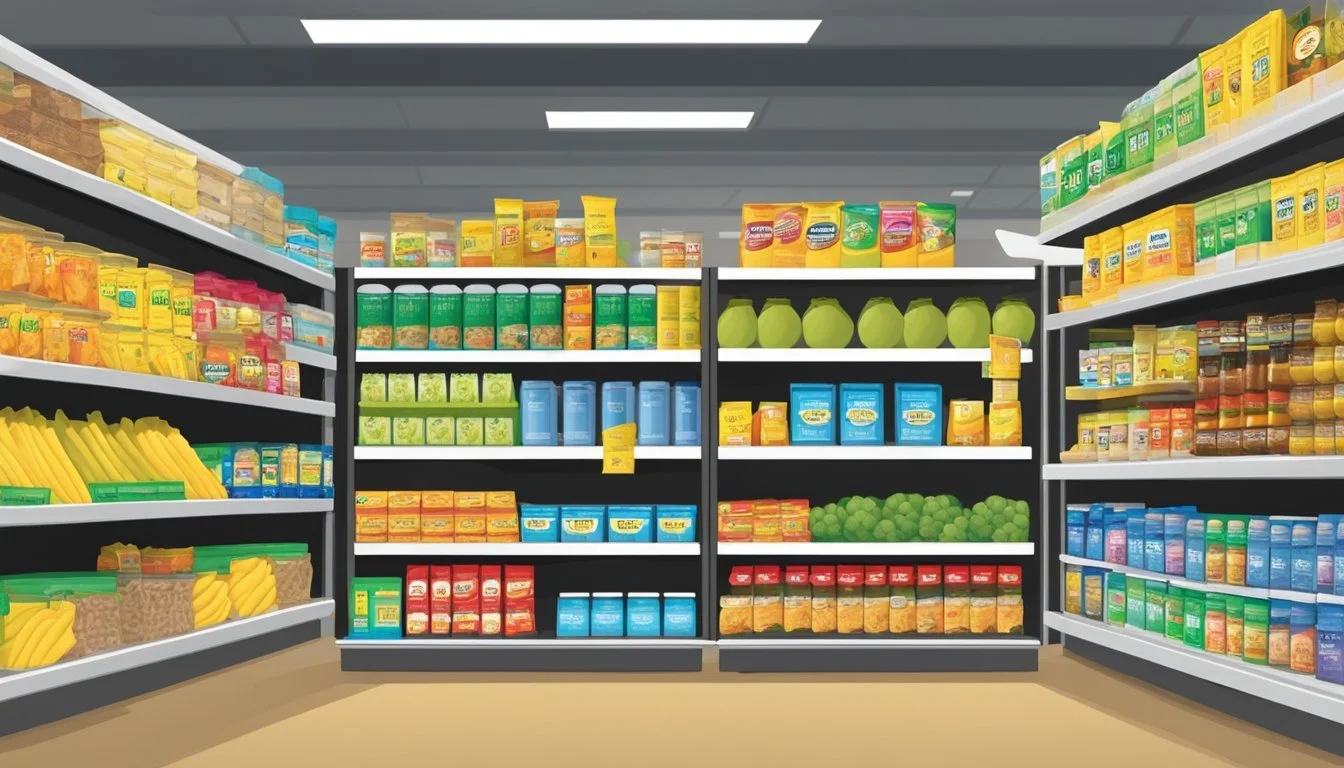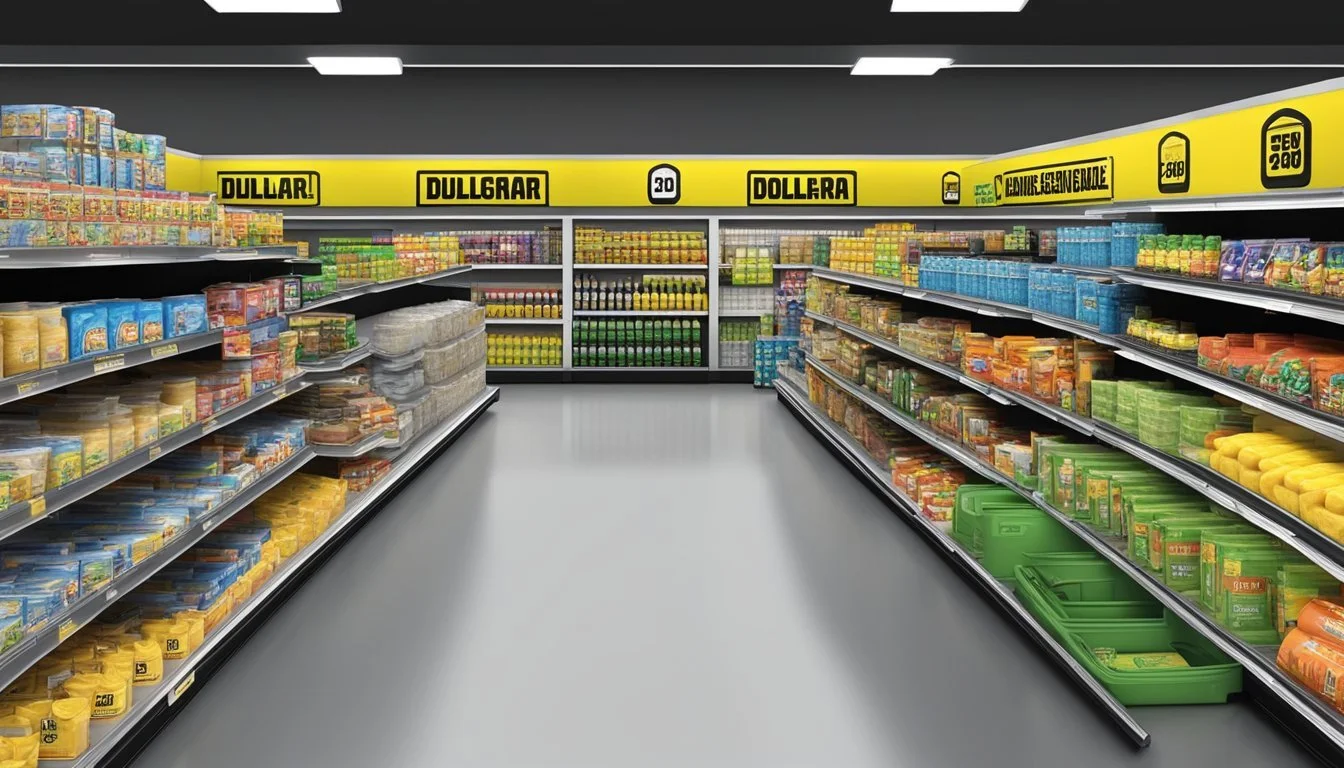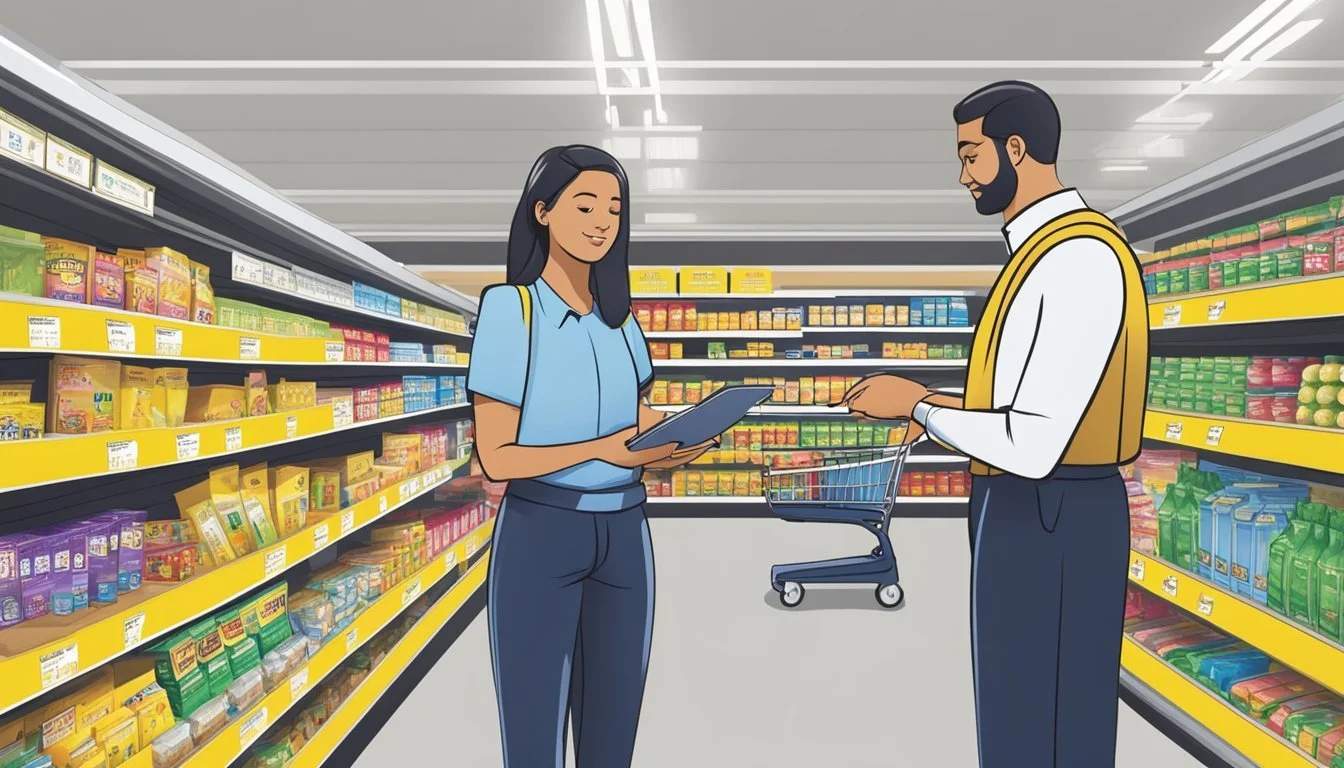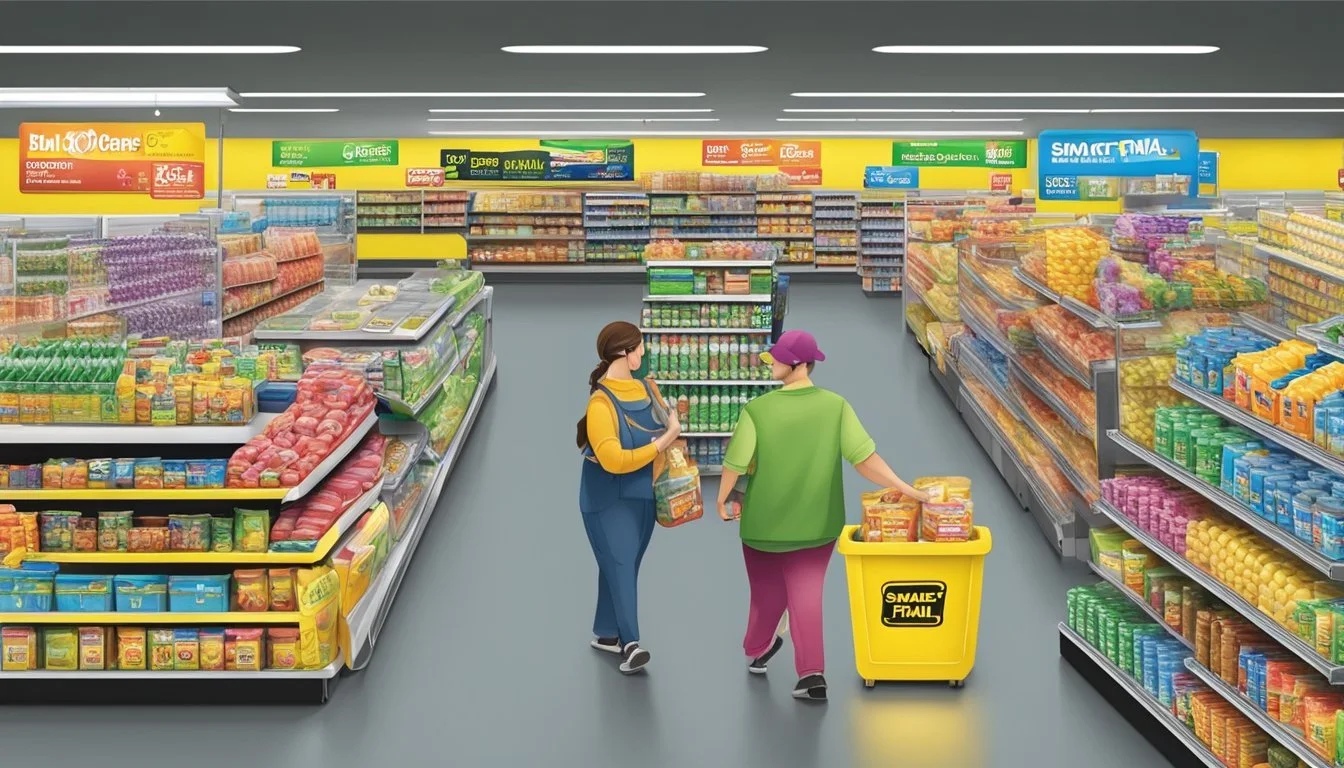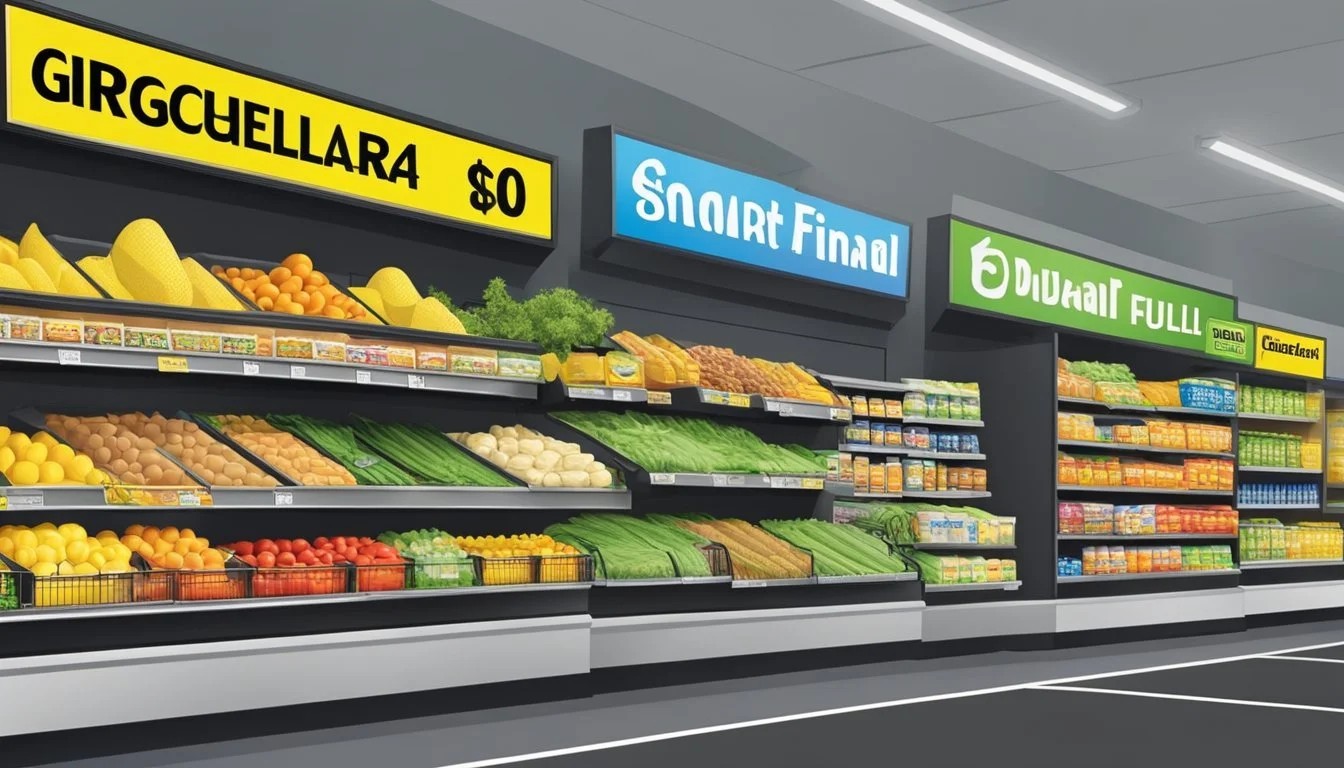Is Dollar General Cheaper Than Smart & Final?
A price comparison of budget retailers
Shopping for groceries on a budget often leads to comparing different stores. Dollar General and Smart & Final are two popular options for value-conscious consumers. Many shoppers wonder which of these retailers offers better prices overall.
While Dollar General tends to have lower prices on many items, Smart & Final can be more cost-effective for bulk purchases and certain product categories. Dollar General focuses on offering everyday essentials at low prices in smaller store formats. Smart & Final, on the other hand, provides a mix of household goods and larger package sizes that can benefit families or small businesses.
The best choice between these stores depends on individual shopping needs and preferences. Dollar General may be ideal for quick trips and basic necessities, while Smart & Final could offer better value for stocking up on certain items. Comparing prices on specific products and considering factors like store location and shopping experience can help determine which retailer is more cost-effective for each shopper.
Overall Price Comparison
Dollar General and Smart & Final both employ competitive pricing strategies to attract budget-conscious shoppers. Their prices vary across different product categories, with each store offering better deals in certain areas.
Discount Stores and Pricing Strategies
Dollar General focuses on providing everyday low prices on a wide range of household items and groceries. The store's small-format design and limited product selection help keep costs down. Smart & Final, on the other hand, operates as a hybrid warehouse and grocery store, offering bulk purchases alongside individual items.
Both stores aim to undercut traditional supermarkets on price. Dollar General often uses smaller package sizes to maintain low price points. Smart & Final leverages its warehouse model to offer competitive prices on larger quantities.
Comparison of Product Categories and Prices
In general, Dollar General tends to have lower prices on packaged goods, personal care items, and household supplies. The store frequently offers name-brand products at discounted rates.
Smart & Final typically has better prices on fresh produce, meat, and bulk groceries. Their larger package sizes can provide savings for customers buying in quantity.
For specific items:
Cleaning supplies: Dollar General often cheaper
Canned goods: Prices comparable, with slight edge to Dollar General
Fresh fruits and vegetables: Smart & Final usually less expensive
Dairy products: Smart & Final generally offers better deals
Shoppers may find the best value by splitting their purchases between the two stores based on each retailer's strengths in different product categories.
Store Brands and Name-Brand Products
Dollar General and Smart & Final both offer a mix of store brands and name-brand products. Store brands often provide significant savings compared to national brands while maintaining quality standards.
Availability of Store Brands
Dollar General carries an extensive line of private-label products under brands like Clover Valley and DG Home. These cover a wide range of categories including food, household items, and personal care products. Smart & Final also offers its own store brands, such as First Street and Sun Harvest, which span various product types.
Both retailers stock popular name-brand items alongside their private labels. This gives customers the choice between familiar national brands and more affordable store alternatives. The availability of store brands at these retailers allows shoppers to stretch their budgets further across different product categories.
Price Difference Between Name-Brand and Store Brands
Store brands at Dollar General and Smart & Final typically cost less than their name-brand counterparts. The price gap can be substantial, with some private-label products priced up to 30% lower than equivalent national brands. For example, a store-brand sugar at Dollar General might cost $2.19 for a 4 lb bag, while a name-brand version could be priced at $3.29.
This price difference extends across various product categories. Household cleaners, canned goods, and paper products often show significant savings when opting for store brands. The exact price gap varies by item and can fluctuate based on promotions or sales.
Shoppers can often find the best value by comparing prices between store brands and name-brands for each product they need. This strategy allows customers to maximize savings while still getting the quality they desire.
Cost-Saving Opportunities
Smart shoppers can find numerous ways to reduce their expenses at both Dollar General and Smart & Final. These strategies can lead to significant savings over time.
Coupons and Weekly Ads
Dollar General offers digital coupons through their mobile app, allowing customers to save on specific items. These coupons can be easily clipped and applied at checkout. The store also releases a weekly ad featuring discounts on various products.
Smart & Final provides printable coupons on their website and distributes paper coupons in stores. Their weekly circular highlights special deals and promotions. Savvy shoppers can combine manufacturer coupons with store sales for maximum savings.
Both retailers frequently offer buy-one-get-one deals and percentage-off discounts on select merchandise. Customers should check ads regularly to take advantage of these limited-time offers.
Membership and Loyalty Programs
Dollar General's DG Digital Coupons program allows customers to load coupons directly to their account. Users can access exclusive deals and receive personalized offers based on their shopping history.
Smart & Final's Smart Rewards program provides members with points on eligible purchases. These points can be redeemed for discounts on future shopping trips. Members also receive special pricing on select items throughout the store.
Both programs are free to join and offer additional savings opportunities. Shoppers can earn extra rewards during promotional periods or by purchasing specific brands.
Members often receive early access to sales and exclusive discounts not available to non-members. Signing up for email newsletters from both stores can provide alerts about upcoming deals and promotions.
Variety and Selection of Products
Dollar General and Smart & Final offer distinct product ranges tailored to different customer needs. Their selections vary in terms of variety, brands, and fresh produce availability.
Comparison of Product Variety
Dollar General focuses on everyday essentials and household items. It stocks around 10,000 to 12,000 SKUs per store, emphasizing low-cost options. The chain carries a mix of national brands and private labels across categories like cleaning supplies, personal care, and pantry staples.
Smart & Final, in contrast, provides a broader selection with approximately 20,000 SKUs per store. It caters to both household and business customers, offering bulk sizes alongside individual portions. The retailer features a wider range of specialty items, international foods, and foodservice products.
Selection of Fresh Produce
Dollar General's fresh produce selection is limited. Most stores carry a small assortment of basic fruits and vegetables, often pre-packaged. The chain has been expanding its DG Fresh initiative to include more refrigerated and frozen foods, but the fresh produce offering remains modest.
Smart & Final excels in fresh produce variety. Its stores typically have large produce departments with a diverse selection of fruits, vegetables, and herbs. The retailer sources both conventional and organic options, catering to health-conscious shoppers and those seeking specialty items.
Store Services and Convenience
Dollar General and Smart & Final offer distinct shopping experiences that cater to different customer needs. Their locations, accessibility, and additional services play crucial roles in determining convenience for shoppers.
Location and Accessibility
Dollar General boasts over 18,000 stores across 47 states, primarily focusing on rural and suburban areas. Many locations are within a 5-mile radius of residential neighborhoods, making quick trips convenient for nearby residents. Their smaller store formats allow for placements in areas that larger retailers might not consider.
Smart & Final operates around 250 stores, mainly concentrated in the western United States. While fewer in number, these stores are often located in more urban and densely populated areas. Smart & Final's locations typically offer larger parking lots to accommodate their warehouse-style stores and bulk-buying customers.
Additional Services Offered
Dollar General provides basic amenities such as ATMs in many stores. Some locations offer FedEx pickup and dropoff services. Their DG GO! mobile app allows customers to scan items while shopping for a faster checkout experience.
Smart & Final caters to both households and businesses. They offer bulk items, foodservice products, and specialized equipment for restaurants and caterers. Many stores feature separate entrances and checkout areas for business customers. Smart & Final also provides online ordering with same-day delivery or in-store pickup options, enhancing convenience for time-pressed shoppers.
Analyses of Shopping Experience
Dollar General and Smart & Final offer distinct shopping experiences tailored to their target customers. Each store's layout, product selection, and service approach shape how consumers interact with the brand.
Customer Expectations and Experience
Dollar General focuses on providing a no-frills shopping environment. Stores are typically smaller, with narrow aisles and basic shelving. Products are often displayed in their shipping boxes to reduce costs.
Smart & Final aims for a more polished presentation. Their stores feature wider aisles and a warehouse-style layout. This setup caters to both individual shoppers and small business owners.
Dollar General emphasizes everyday low prices on a limited selection of items. Smart & Final offers a broader range of products, including bulk sizes, at competitive prices.
Both stores stock a mix of national brands and private label products. However, Smart & Final tends to carry more premium options in certain categories.
Efficiency and Checkout Process
Dollar General prioritizes quick transactions. Stores often have just a few checkout lanes, which can lead to lines during busy periods. Self-checkout options are limited.
Smart & Final typically provides more checkout lanes and often includes self-checkout kiosks. This can help reduce wait times, especially for customers with smaller purchases.
Dollar General's compact store format allows for faster shopping trips. Customers can usually find what they need quickly.
Smart & Final's larger stores may require more time to navigate. However, they offer a more comprehensive shopping experience for those seeking a wider variety of items.
Both retailers strive to maintain competitive prices, but their approaches to efficiency and customer service can impact the overall value perception for shoppers.
Dollar Store Market and Competitors
Dollar stores and discount retailers compete fiercely for budget-conscious shoppers. These companies employ various strategies to attract customers and maintain market share in a crowded field.
Comparison with Other Retailers
Dollar General faces competition from several key players. Dollar Tree and Family Dollar, with over 16,000 locations combined, pose a significant challenge. Walmart and Target also compete for similar customers, offering low prices on a wide range of products. Amazon's online presence impacts the market as well.
Dollar stores typically offer lower prices than traditional grocery chains. However, they may not always beat prices at larger discount retailers or warehouse clubs. Smart & Final, as a warehouse-style store, competes on bulk pricing for some items.
Product selection varies between retailers. Dollar General stocks a mix of national brands and private labels. Smart & Final focuses more on bulk sizes and food service items.
Market Position of Dollar General and Smart & Final
Dollar General holds a strong position in the discount retail market. With nearly 20,000 stores, it has extensive reach, especially in rural areas. The company's strategy centers on convenience and low prices for everyday essentials.
Smart & Final occupies a different niche. It targets both households and small businesses with its warehouse format. The company has fewer locations but offers larger package sizes.
Both retailers aim to provide value, but their approaches differ. Dollar General emphasizes small, frequent purchases. Smart & Final caters to customers buying in larger quantities.
Market share varies by region. Dollar General has a broader national presence, while Smart & Final operates primarily in the western United States.
Consumer Strategies for Saving on Groceries
Smart shopping techniques can significantly reduce grocery bills. Savvy consumers employ various tactics to stretch their food budgets without sacrificing quality or nutrition.
Effective Use of Discounts and Promotions
Loyalty programs offer immediate savings for shoppers. Many stores provide digital coupons, exclusive deals, and personalized offers through their apps or websites. Consumers should compare prices across different stores and take advantage of seasonal sales.
Bulk buying non-perishable items when they're on sale can lead to substantial savings over time. However, shoppers must be cautious not to overbuy perishables that may spoil before use.
Some stores offer price matching. Customers can bring competitors' ads to secure the lowest price without visiting multiple locations. Timing purchases around promotional cycles can yield additional savings on regularly consumed items.
Creating a Cost-Efficient Shopping List
Planning meals in advance helps create focused shopping lists. This practice reduces impulse purchases and food waste. Shoppers should check their pantry and fridge before listing needed items to avoid unnecessary duplicates.
Opting for store brands often provides comparable quality at lower prices. Consumers can experiment with different brands to find the best balance of cost and quality.
Prioritizing whole ingredients over pre-prepared foods typically results in cost savings. Buying produce in season ensures better prices and quality. Frozen fruits and vegetables offer nutritious alternatives when fresh options are expensive.
Shoppers should remain flexible, substituting planned items with sale products when appropriate. This adaptability allows for capitalizing on unexpected discounts while still adhering to the overall shopping plan.
Logistic and Distribution Considerations
Dollar General and Smart & Final employ distinct supply chain strategies that influence their pricing. These approaches impact product availability and costs across their store networks.
Supply Chain Impact on Prices
Dollar General operates a vast network of small-format stores, requiring frequent replenishment. The company's efficient supply chain management allows it to stock over 10,000 stores across 44 states. This extensive reach enables bulk purchasing from suppliers, potentially lowering costs.
Dollar General's private fleet handles over 20% of outbound logistics, reducing transportation expenses. The company also implements a "Fast Track" initiative to streamline distribution processes.
Smart & Final, with fewer locations, may face different supply chain challenges. Its focus on bulk items and fresh produce necessitates specialized handling and storage.
Distribution Center Locations
Dollar General strategically places distribution centers to serve its widespread store network efficiently. The company operates multiple dry and fresh distribution facilities across the United States.
A recent addition in Walton, Kentucky, enhances Dollar General's distribution capabilities. This expansion aims to reduce logistics costs and improve product availability.
Smart & Final's distribution network is less extensive due to its smaller store footprint. The company likely concentrates its distribution centers in regions with higher store density.
Both retailers optimize their distribution center locations to minimize transportation costs and ensure timely product delivery to stores.





